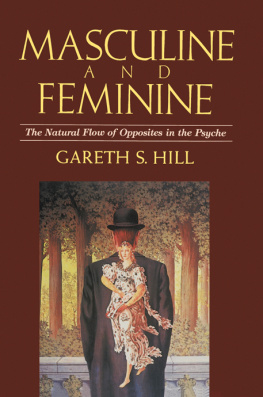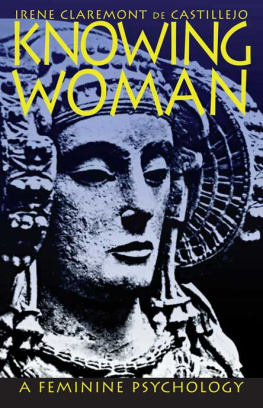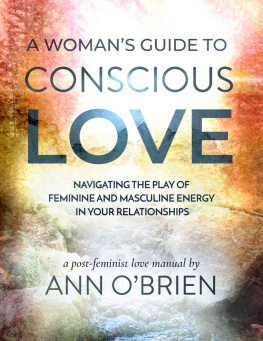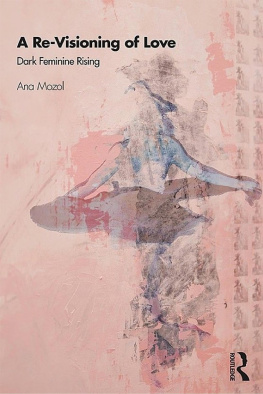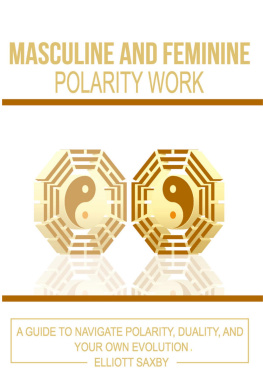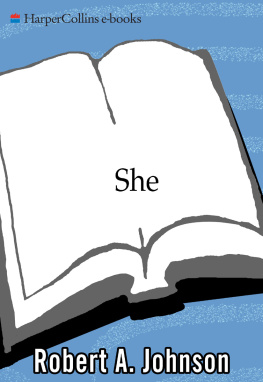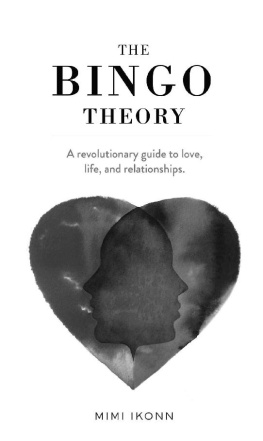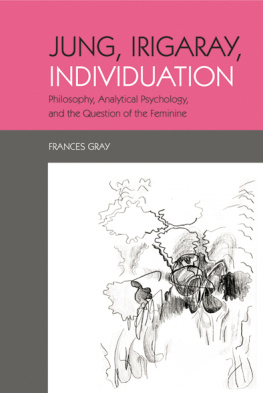At last someone has attempted a reformation of the masculine and feminine principles. Hill frees us from some of the gender-related fallacies that Jungian psychology has for some time fallen heir to. This book represents a wedding of clinical and archetypal poles of Jungian psychology and a distillation of the Jungian approach to psychotherapy. It is essential reading for Jungians as well as non-Jungians, the experienced as well as the novice.
LAWRENCE W. JAFFE, Ph.D., author of Liberating the Heart: Spirituality and Jungian Psychology
Gareth Hills analysis of the dynamic and static masculine and feminine patterns in the human psyche provides a fresh perspective for clinical theory.
LINDA SCHIERSE LEONARD, Ph.D., author of The Wounded Woman and Witness to the Fire
An extremely well-written, well-informed, and wide-ranging study of the masculine and feminine. Integrates Jungian and non-Jungian approaches in a critical and very useful way. An exceptional book.
NATHAN SCHWARTZ-SALANT, Ph.D., author of The Borderline Personality: Vision and Healing
Hill offers a model of Jungian psychotherapy that is empathic, logical, and shrewd toward those patterns of behavior that traditionally have assumed a gendered guise. His appealing alternative is an open-hearted fluency that knows how to use the various gender possibilities as so many guidelines past which to grow to a wider wholeness.
JOHN BEEBE, Editor, San Francisco Jung Institute Library Journal
Masculine and Feminine, those much-maligned but profound Jungian concepts, have been rescued by Gareth Hill from the junk heaps of jargon and the fury of the gender wars. With great sensitivity to womens struggle against sexual stereotyping and ghettoization, he frees us to see them as elemental patterns that belong to us all.
NAOMI RUTH LOWINSKY, PH.D., author of Stories from the Motherline: Reclaiming the Mother-Daughter Bond
An original and refreshing approach to a subject that tends to create controversy and discord. Hill has achieved a style of writing, illustrated with interesting diagrams, that does justice to both a linear and cyclic mode of presentation.
JOSEPH HENDERSON, M.D., author of Thresholds of Initiation
Masculine and Feminine offers both clinician and theoretician a fresh, well-reasoned, and much needed dynamic theory. Dr. Hills work advances and deepens our respect for a distinct masculine and feminine psychology by bridging the dichotomy between old polarities with a new and workable paradigm.
LOREN E. PEDERSEN, PH.D., author of Dark Hearts: The Unconscious Forces That Shape Mens Lives
Hills important contribution to the continuing revision of thought on gender roles in analytical psychology is fascinating and comprehensive. He manages to combine theory and experience in a vivid and readable way for both the clinician and layperson alike. It has changed the way I work and think.
ROBERT H. HOPCKE, author of A Guided Tour of the Collected Worksof C. G. Jung; Jung, Jungians, and Homosexuality; and Mens Dreams, Mens Healing
ABOUT THE BOOK
A Jungian analyst provides a new model for understanding the masculine and feminine principles that exist in everyone, providing insight into the events of daily life and the themes of entire lifetimes.
GARETH S. HILL, Ph.D., is a clinical social worker and a Jungian analyst with a private practice in Berkeley, California. He is on the faculty of the California Institute for Social Work, the Psychotherapy Institute of Berkeley, and the University of California at San Francisco.
Sign up to learn more about our books and receive special offers from Shambhala Publications.

Or visit us online to sign up at shambhala.com/eshambhala.
MASCULINE
AND
FEMININE
The Natural Flow of Opposites in the Psyche
GARETH S. HILL

SHAMBHALA
Boston & London
2013
SHAMBHALA PUBLICATIONS, INC.
Horticultural Hall
300 Massachusetts Avenue
Boston, Massachusetts 02115
www.shambhala.com
2013 by Gareth S. Hill
Cover art: Le Bouquet tout fait by Ren Magritte, 1956, private collection. Reproduced courtesy of Photothque Ren MagritteGiraudon/Art Resource, New York. RM 154. AR #4850.
All rights reserved. No part of this book may be reproduced in any form or by any means, electronic or mechanical, including photocopying, recording, or by any information storage and retrieval system, without permission in writing from the publisher.
Diligent efforts were made in every case to obtain rights from copyright holders for the art reproduced in plates 1 through 19. In a few instances, the efforts were unsuccessful. The author is grateful for the use of this material.
LIBRARY OF CONGRESS CATALOGING-IN-PUBLICATION DATA
Hill, Gareth S., 1932
Masculine and feminine: the natural flow of opposites in the psyche/Gareth S. Hill.1st ed.
p. cm.
Includes bibliographical references and index.
eISBN 978-0-8348-2866-7
ISBN 1-57062-647-2 (pbk.)
1. Masculinity (Psychology). 2. Femininity (Psychology). 3. Archetype (Psychology). 4. Jung. C. G. (Carl Gustav), 18751961. I. Title.
BF175.5.M37H55 1992
91-50799
155.33dc20
CIP
BVG 01
Dedicated to my consultees, past, present, and future
Contents


THERE ARE a great many people who have helped me directly and indirectly in the writing of this book. I have drawn from the background of a thirty-year career in the practice of psychotherapy and Jungian analysis and the profound influence of countless teachers, colleagues, consultees, and students. Unfortunately they cannot all be thanked individually. First, I should like to acknowledge and thank the many members of my clinical consultation groups over the years in the training program of the Psychotherapy Institute in Berkeley. It was in one such group that the inspiration for this project arose. The many members of my private consultation groups also have my heartfelt gratitude for their unflagging interest in and support for my work as it has applied to our understanding of their clinical work over the years.
I do, however, want to thank individually some former and present consultees who were especially involved in and supportive of the development of my ideas: Claire Allphin, Curry Barber, Mary Boyvey, Virginia Choo, Lynn Franco, Naomi Lowinsky, Martha Sager, Margaret Skinner, and Amy Weston.
For their critical reading of my manuscript at various stages in its development, my thanks to Claire Allphin, Shira Barnett, Joan Cole, Sue Ezekiel, Lawrence Jaffe, Dolores Rodriguez, Ellen Siegelman, Marilyn Steele, Mary Tennes, Verneice Thompson, and Nancy Ulmer. My especial thanks for their extensive editorial and substantive help to Rosemary Lukton, Margaret MacKenzie, Leah Shelleda, and Bryan Wittine, with especial thanks to Kimn Neilson.
Central to the effectiveness of this book is the clinical material that illustrates my ideas. I am grateful to my clients for so graciously giving me permission to use their material, and for what they have taught me. My thanks to the Scholarship Committee of the C. G. Jung Institute of San Francisco for their financial support of editorial services as well as the reproduction of photographs. And my thanks to Michael Flanigan and Harry Prochaska, of the Archive for Research in Archetypal Symbolism (ARAS) of the C. G. Jung Institute of San Francisco, for their help in locating and reproducing the illustrative images in the book and to Robin Spaan for her wonderful line drawings of many of the images from ARAS. For the index, I am grateful to Alice McHugh.
Next page
